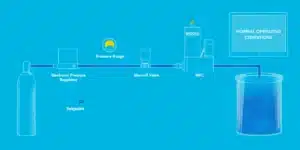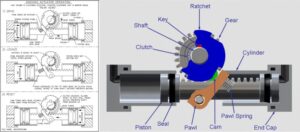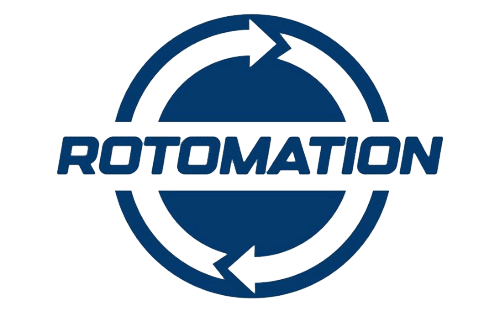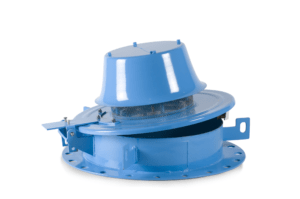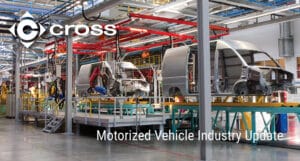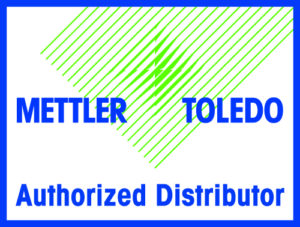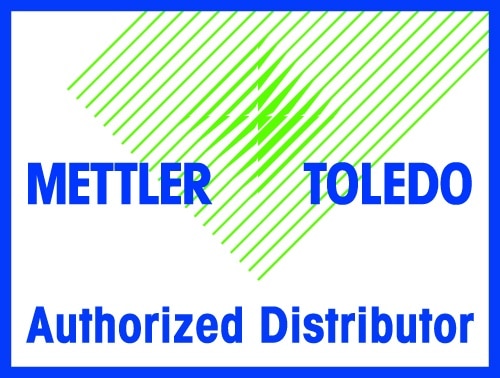John Loose | July 20th, 2017
As the popularity of craft beer continues to grow, so do the options available to brewers for packaged OEM brewing systems. These systems come in a wide variety and are a great way to start off. However, these standard systems sometimes lack key features that can improve the brewing process. I discuss some of these shortcomings in my recent interview with Crooked Handle Brewing head brewer, Jason Moore.
Crooked Handle Brewing is a new brewery in Springboro, Ohio. Their brew house is a 4.5 barrel (BBL) all electric system from Glacier Tanks. This system is controlled by a Siemens S7-1200 controller with a Siemens Basic Human Machine Interface (HMI) Panel.
Crooked Handle has been open since December 2015 and has seen great success. With the popularity of their craft beer, they are already looking into investing in a larger brew house at a separate location with the hopes of a wider distribution network. Using a Siemens S7-1200 controller, Crooked Handle’s brewing system has great potential for expansion while maintaining reliable process control. Most OEM brewing systems have yet to realize the full capability that these robust and affordable controllers have. These OEM brewing systems are typically bought as a package or on a pallet, which makes for easier installation and use. The packages are a wonderful investment for breweries and are a great way to get started, but as described in the interview, the standard OEM brewing system has some shortcomings that hamper the process efficiency, quality, and consistency.
OEM Brewing System Upgrades
The biggest shortcoming of these out-of-the-box systems is that they do not come with any flow control. A simple paddle wheel flow meter would suffice in measuring the volume into the tank and enabling/disabling pumps and valves. Adding flow meters to the inlets of the tanks can provide a more accurate reading of volume than with a site glass. Another benefit of adding flow meters is that a predefined volume can be set to fill the Hot Liquor Tank (HLT)allowing the brewer to step away and work on a multitude of other tasks. With the addition of flow meters, the process can be more automated, giving the brewer more time to focus on hitting their numbers.
Another area that could use improvement on these OEM brewing systems is in the standard valving. The plumbing is fairly straightforward and there are typically 1-3 routes the material can go. But the process of changing these valves manually can be cumbersome. Fortunately, at Crooked Handle, the system that they chose has a bulkhead that has all of the manual valves in one location. If these manual valves were to be replaced with solenoid valves, the inconvenience of opening and closing all the correct valves would be eliminated. Solenoid valves allow for the Siemens S7-1200 controller to control them based on the destination of the material. Due to the diameter of the piping used, the solenoid valves needed are very cost effective and can increase the productivity drastically from brew to brew.
With this system, the pumps are manually controlled at the control panel. If they were to be added to the Siemens S7-1200 controller, they could be included into the automation. At the very least, they could be controlled manually from the HMI Panel. The goal of the HMI is to control the process from one central location so that the operator is not going from one location to open valves and another to turn on pumps and another to check volume in a vessel. The HMIs that are installed on these OEM brewing systems, similar to the PLC, are usually not utilized to their fullest extent. In this instance, the HMI on this OEM brewing system is only used for indication and it is limited to the alarms.But this does not have to be the case. Simple modifications can be made to make this a single point operator station, allowing the operator to focus on brewing and not running around the brew house.
Another valve-related improvement would be to install stainless steel piping to replace the bulkhead and three-way valves. While it is not as cost effective as using food grade rubber hoses on a bulkhead, this is the preferred setup. By implementing these improvements, the majority of human interaction into the process could be eliminated. If someone mistakenly turned on a pump with the incorrect hose configuration, the resulting wort accident would be costly and dangerous.
Implementing OEM Brewing System Upgrades
Here’s an example of how the brewing process can be improved by implementing these OEM brewing system upgrades. By utilizing the HMI as a single point of operation and the PLC to control the process with flow meters and solenoid valves, a sequence of operation can be programmed. At the HMI, the operator could input their HLT Volume, Mash Temp, Mash Time (Step Mashing could be achieved as well), Boil Volume, and Boil Time. The Brewer could then simply hit “start” and focus on other things in the brew house such as cleaning, preparing the brew day log, yeast calculation, preparing fermenters, transferring from fermenters to brite tanks, or even kegging.
Upon start, the control system would automatically open the inlet valve to the tank and turn the pump on to begin to fill the HLT. When the HLT reaches a certain volume, the heating elements can initiate. When the correct volume is measured by the flow meter, the inlet valve would close and the pump would turn off automatically.
For simplicity, we will assume a single infusion, but step mashing is quite achievable. At this point, we can mash in with our strike water and maintain a consistent temperature. Most brewing systems of this size and larger have some sort of Proportional-Integral-Derivative (PID) function. The stand alone units work well, but the benefit of the PLC is that it can hold a much higher tolerance on temperature. You can learn about PID Controllers and how to tune them here.
At this point, the mash would have stopped at the predetermined amount of time and would be transferred to the Boil Kettle (BK). Similar to before, the outlet valve of the Mash Tun (MT)and the inlet valve of the BK will open and the pump would turn on. Another flow meter on this line would measure the boil volume going into the BK. This will provide accurate measurement compared to your calculated measurement of grain absorption and will ensure that you are hitting the correct pre-boil gravity. When the specified volume is reached, the vessel would begin to heat and shut the inlet and outlet valves of the BK and MT respectively. Once at a boil, a timer would set.
At Cross Company, we can implement features to improve the process and limit error from human interaction. There are some myths out there that streamlining automation is taking “craft” away from Craft Beer, which simply isn’t the case. The “craft” comes from the quality of ingredients, recipe, experimentation, and culture. The means of making beer is just a process, a process that can be automated and refined to increase your bottom line and make your brewery more efficient.

